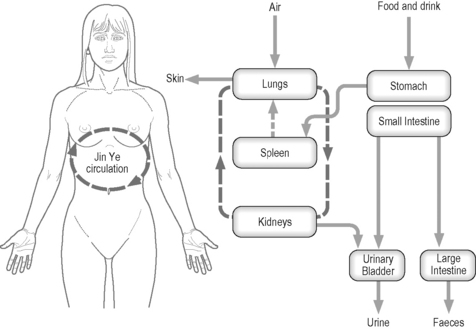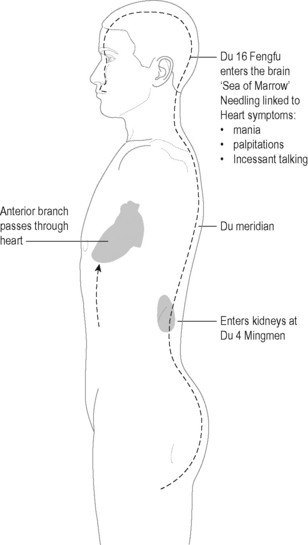1 History and background of traditional Chinese medicine in neurological conditions
Zang Fu, the origins of physiology
Firstly we will give a quick explanation of the major functions of the Zang Fu organs. These functions are seen as inextricably linked and interdependent and lead to TCM diagnoses of some complexity. We are indebted to Worsley, an influential Western teacher and practitioner (and also originally a physiotherapist) for some useful ideas about the Zang Fu organs in general [1]. Most texts offer two lists of six pairs of organs, some functions of which correspond to those understood by Western medicine and some which plainly do not (Table 1.1).
| Zang organs (Yin) | Fu organs (Yang) |
|---|---|
| Heart (Xin) | Small Intestine (Xiao Chang) |
| Lungs (Fei) | Large Intestine (Da Chang) |
| Liver (Gan) | Gall Bladder (Dan) |
| Spleen (Pi) | Stomach (Wei) |
| Kidney (Shen) | Urinary Bladder (Pang Guan) |
| Pericardium (Xin Bao) | Sanjiao |
|---|---|
| (Extra Uterus) | (Extra Brain) |
Heart (Xin)
The connection between the Heart and the emotions is well understood in folk legend in most countries but there is little scientific proof that this could have any foundation. However there are some interesting ideas in a paper by Rosen [2], where the internal memory of the heart cells with regard to physiological process is recognized and discussed. It is suggested that the heart does remember, ‘making use of mechanisms similar to those in other systems that manifest memory, the brain, the gastrointestinal tract and the immune system’.
Since the Du meridian is also closely associated with the Kidneys at Du 4 or Mingmen, both these points can be used to influence Heart function (Figure 1.1).
Lungs (Fei)
The Lungs control respiration and are responsible for the intake of clean air, which they convert into ‘Clear Qi’. Together with the Qi produced from substances that are eaten and drunk, this goes to make up the Post Heaven or renewable Qi within the body. The rhythm of the Lungs sets the rate for all other body functions, starting with the first breath taken by the newborn baby. The clean air or Qi from the Lungs condenses into fluid and passes down through the Sanjiao to the Kidneys, where it is heated, vaporizes and ascends to the Lungs again, forming a sort of energy cycle effectively controlling water circulation within the body (Figure 1.2).

Figure 1.2 • Jin Ye circulation.
(Reproduced with permission from Hopwood V. Acupuncture in Physiotherapy. Oxford: Butterworth Heinemann: 2004.)
Liver (Gan)
Some authorities describe this as a rhythm, similar to that of the Lungs, but differing in that it is a voluntary rhythm depending on the circumstances [3]. Ideas of fight and flight, as understood in Western neurology, are clearly appropriate here.
Liver Qi should flow freely in all directions. If it is constrained it is said to invade the Stomach, Spleen or Lung. ‘Liver invading Spleen’ is fast becoming a common modern syndrome, perhaps because of the combined effect of unsuitable diet and stress on the liver triggering a chain reaction throughout the Zang Fu [4]. The Liver functions as a gentle regulator of the Spleen and Stomach and is thus a regulator of digestion. In addition, bile, under the control of the Liver, aids in the digestive process.
Spleen (Pi)
In TCM the Spleen is regarded as the minister of agriculture, able to control and regulate the production and distribution of essential nourishment. The Spleen is said to govern transformation and transportation. It is the main digestive organ in TCM and responsible, along with the Stomach, for the breaking down or transformation of ingested food and drink and its subsequent transportation to the other sites in the body where it will be utilized. The Spleen is said to incorporate and then distribute Nutritive Essence in order to diminish or augment body mass [5]. It is responsible for forming and reconstituting the internal milieu, gathering and holding together the substance of the body.
Stay updated, free articles. Join our Telegram channel

Full access? Get Clinical Tree









